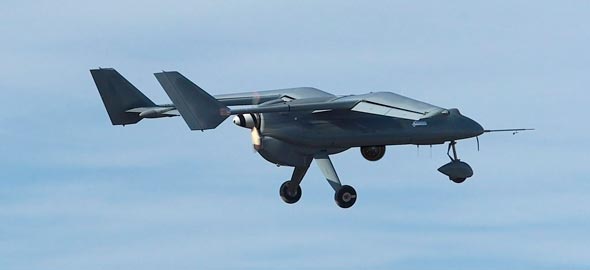The Italian Falco Unmanned Aerial Vehicle (UAV) developed by Selex Galileo of Finmeccanica completed a series of flight tests aimed at expanding its ISR capabilities, through the integration of multiple sensors. In recent months the unmanned aircraft was flown with the PicoSAR Synthetic Aperture Radar (SAR). The new high-resolution SAR has the ability to detect and identify, with extreme accuracy, possible disturbance of the ground surface which, when coupled with its change detection function – could hint of the emplacement of Improvised Explosive Devices (IED).
During the flight tests the company’s High Mobility Ground Control Station (HM-GCS) which further enhances the system’s ISR credentials was operated. The HM-GCS is self-contained and offers a full training simulation environment and mission rehearsal capability. Exploiting a new and more powerful datalink. The system performed “hand-over” missions, which combined a number of Ground Control Stations (GCS). This in-flight hand-over increases the overall operational capability of the system, by overcoming the inherent Line of Sight (LOS) data link limits of a single ground station.
The recent tests also confirmed catapult launches and automatic landings of the Falco at full weight, validating the aircraft full payload capabilities. These launches also simulated a “surge” conditions, where aircraft turn-around time between missions was reduced to under one hour. The test flight campaign took place at the company’s UAS facility at Parc Aberporth in Wales and the Arctic Flight Test Centre in Finnish Lapland.

















